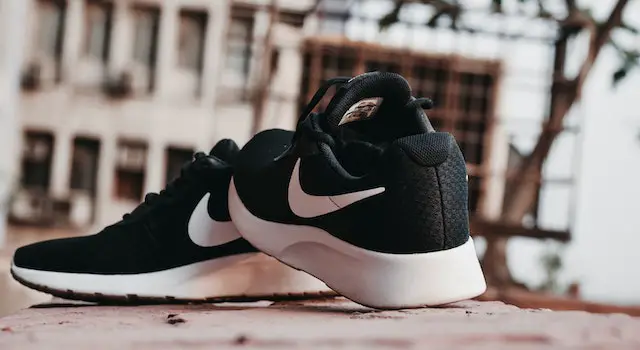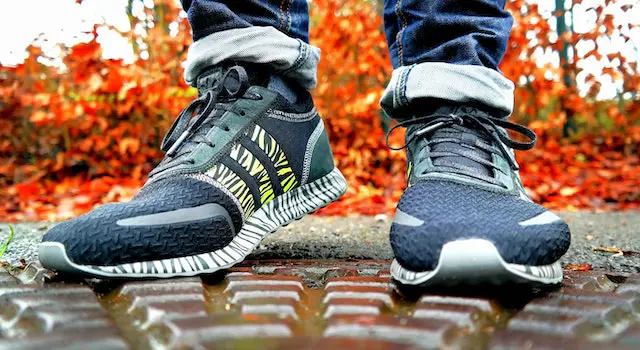Podiatrist Recommended Shoes for Supination
Neutral shoes work ideal for supination. Additionally, shoes with a large footprint under the foot frequently work well. When supination leads to continuous stress on the lateral portion of the foot, cushioning is frequently beneficial. Phantom 14 or Interactions 11 are two excellent alternatives.
You may prevent a lot of pain using the best footwear for supination. Supination, the propensity to jog with your pressure landing on the outside of your foot, makes it harder for you to absorb the force of each step. Whether you run on highways, trails, or the best treadmill, investing in the appropriate shoes is essential since supination can raise the probability of injury for sprinters if it is not addressed.
How to pick the finest walking or running footwear
Make sure that the shoe fits ahead of anything else. Dr. Mendezoon claims that “many individuals wear the incorrect size shoe.” ” People frequently select minimal footwear, which leads to complications over time. Mendezoon notes that as we get older, our feet may become broader or flatter, particularly when we enter and beyond our forties. Putting your feet in tiny shoes can lead to blisters, corns, and ailments like nerve entrapment or bunions.
Selecting the correct footwear
Putting the price aside, you should consider the following factors when choosing shoes for your unique feet and movement pattern (i.e., where your foot and ankles move across every stride), which a knowledgeable salesperson can help you identify.
Neutral:
Neutral movement patterns typical of orthoses or correct foot movements without excessive pronation or supination are recommended for wearers of these shoes. The most popular shoes are neutral models, often airy and with minimal lining. Neutral shoes with good cushioning are best for those who run or walk excessively on their backs because the extra support keeps your legs straight and upright.
Motion Control:
Motion-based shoes have additional support, much like stability shoes, but they are made for runners who overpronate significantly. Motion control shoes restrict excessive foot motion and are even more adaptable than stability shoes since they include additional assistance in the arch and heel portions of the shoe. Shoes that limit motion are heavier and more durable since more correction is required than with stability shoes. For those who overpronate the most, these. They are created to stop the foot from sliding inside the shoe and more forcibly cure pronation problems during walking or running. They are typically heavier and more substantial than stability shoes.
Stability:
Jogging flat-footed or over pronation, which occurs whenever the heel rolls too far inside during running, requires stability shoes. They are made to address this by providing additional assistance in the outsole, or arch area, to assist runners in maintaining a neutral foot position. While this additional stability can assist prevent overpronation, the technology utilized to deliver it is frequently referred to as a medical post. However, they can be heavier than neutral shoes.
Recommended walking shoes by a podiatrist
Despite their name, “walking shoes” are not always what a podiatrist advice for ardent walkers, even though you may have seen them on store shelves. They explain, “That’s a double-edged sword,” The material used to make most walking shoes is often imitation leather, which isn’t very breathable. As a result, it may draw bacteria, resulting in stenchier feet and problems like foot fungus. Additionally, since the synthetics aren’t optimal for breathability, they can degrade more quickly than genuine leather.
Because of this, he advises wearing running shoes instead of walking shoes: “I usually advocate a pair of shoes [as a walking shoe]. Running shoes are more technically sophisticated than standard walking shoes.
Types of shoes for supination suggested by a podiatrist
Some of the walking shoes suggested by a podiatrist are as follows.
Nike Air Monarch IV, a classic neutral walking shoe:
If you don’t find the renowned Nike Air Monarch IV leather construction to be extremely warm, it’s a good option. It features a large toe box that will enable room for your toes to move, cushioning and a solid sole that is suitable for walking. It works best for people who seek more cushioning and have neutral feet. The sizes range from a men’s size 6.5 or a women’s length 8 to a men’s size 15 or a women’s size 16.5.
New Balance 928v3, the finest stability walking shoe:
These classic leather walkers include motion control and plush padding, making them firmer to prevent the arch from collapsing inside the shoe. In addition, it comes in five widths for a more personalized fit: narrow, regular, broad, X-wide, and XX-wide. It is also available in sizes from 7 to 16 for men and 5 to 13 for women. Over 800 people have praised the 928v3 walking footwear on New Balance. They are pretty comfortable and remain that way.
Brooks Beast 20 & Ariel 20 are two choices for flexible neutral shoes:
Similar in shape and characteristics to the Brooks Addiction Walker 2, this pair—known as the Beast for men’s sizes and Ariel for women’s—is made for running and has a mesh upper that is more breathable. There is still the “GuideRails” technology, which offers some stability. The Beast comes in big sizes 8 to 16, and the Ariel in women’s sizes 6 to 13, and both beaches are offered in medium, comprehensive, and extra-wide.
Saucony Omni 19 is a fantastic choice for a stability shoe:
For walkers seeking modest stability, Dr. Mendezoon suggests this motion-control running shoe. They are strong, incredibly springy, and well-cushioned. Men’s size distribution is 7 to 15 & females’ sizes 5 to 12 are available in the Saucony Omni 19 medium or broad. The Omni 19 has received high marks for its comfortable fit, cushioning, and good arch support from several reviewers. A satisfied critic states, “I return for Omnis every year.” “These are incredibly comfy and give me the stability and support I need despite having rather flat feet. They may be used for nearly anything, too. The shoe’s profile suits running, working out, and everyday wear.”
Conclusion
Watch out for the above when selecting a brand that best works for a strong arch that supinates. An oversized toe box, a rigid shank, and a cushioned heel. Any shoe that supports high arches and supination must have these properties. Shoes from brands like New Balance, Asics, Hoka, Mephisto, and Mizumo fit this description.



















